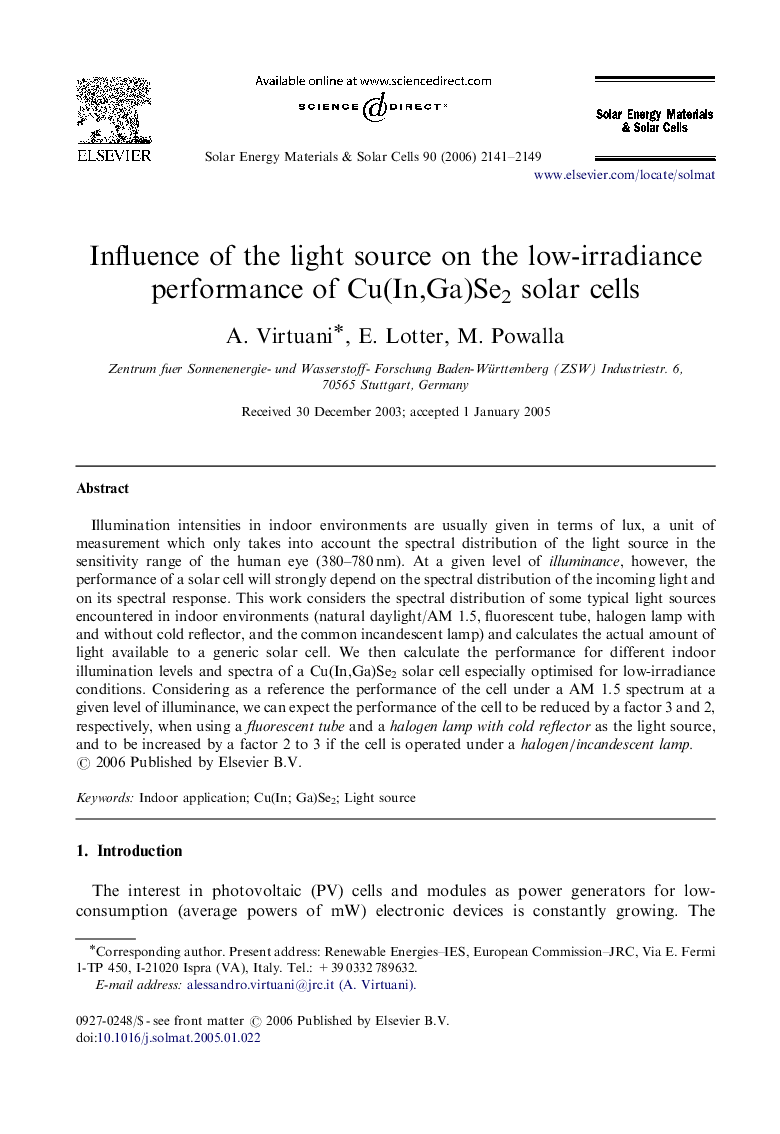| Article ID | Journal | Published Year | Pages | File Type |
|---|---|---|---|---|
| 81242 | Solar Energy Materials and Solar Cells | 2006 | 9 Pages |
Illumination intensities in indoor environments are usually given in terms of lux, a unit of measurement which only takes into account the spectral distribution of the light source in the sensitivity range of the human eye (380–780 nm). At a given level of illuminance, however, the performance of a solar cell will strongly depend on the spectral distribution of the incoming light and on its spectral response. This work considers the spectral distribution of some typical light sources encountered in indoor environments (natural daylight/AM 1.5, fluorescent tube, halogen lamp with and without cold reflector, and the common incandescent lamp) and calculates the actual amount of light available to a generic solar cell. We then calculate the performance for different indoor illumination levels and spectra of a Cu(In,Ga)Se2 solar cell especially optimised for low-irradiance conditions. Considering as a reference the performance of the cell under a AM 1.5 spectrum at a given level of illuminance, we can expect the performance of the cell to be reduced by a factor 3 and 2, respectively, when using a fluorescent tube and a halogen lamp with cold reflector as the light source, and to be increased by a factor 2 to 3 if the cell is operated under a halogen/incandescent lamp.
